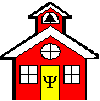Department of Educational Psychology
Document Type
Article
Date of this Version
2022
Citation
Journal of Prevention and Health Promotion 2020, Vol. 1(2) 183– 211.
DOI: 10.1177/2632077020966571
Abstract
Sexual violence (SV) and intimate partner violence (IPV), which often cooccur with bullying, are serious public health issues underscoring the need for primary prevention. The purpose of this study was to examine the impact of a community-building SV and IPV prevention program, Green Dot Community, on adolescents’ perceptions of community social norms and their propensity to intervene as helpful actionists using two independent data sources. Green Dot Community takes place in towns and aims to influence all town members to prevent SV and IPV by addressing protective factors (i.e., collective efficacy, positive prevention social norms, and bystander helping, or actionism). In the current study, one town received Green Dot Community (the prevention-enhanced town), and two towns received prevention as usual (i.e., awareness and fundraising events by local IPV and SV advocacy centers). The program was evaluated using a two-part method: (a) A cross-sectional sample of high school students from three rural communities provided assessment of protective factors at two time points (Time 1, n = 1,187; Time 2, n = 877) and (b) Youth Risk Behavior Survey data from the state Department of Health were gathered before and after program implementation (Time 1, n = 2,034; Time 2, n = 2,017) to assess victimization rates. Youth in the prevention-enhanced town reported higher collective efficacy and more positive social norms specific to helping in situations of SV and IPV over time but did not differ on bystander behaviors or on victimization rates. Community-based prevention initiatives may be helpful in changing community norms to prevent SV/IPV.
Included in
Child Psychology Commons, Cognitive Psychology Commons, Developmental Psychology Commons, School Psychology Commons


Comments
U.S. government works are not subject to copyright.